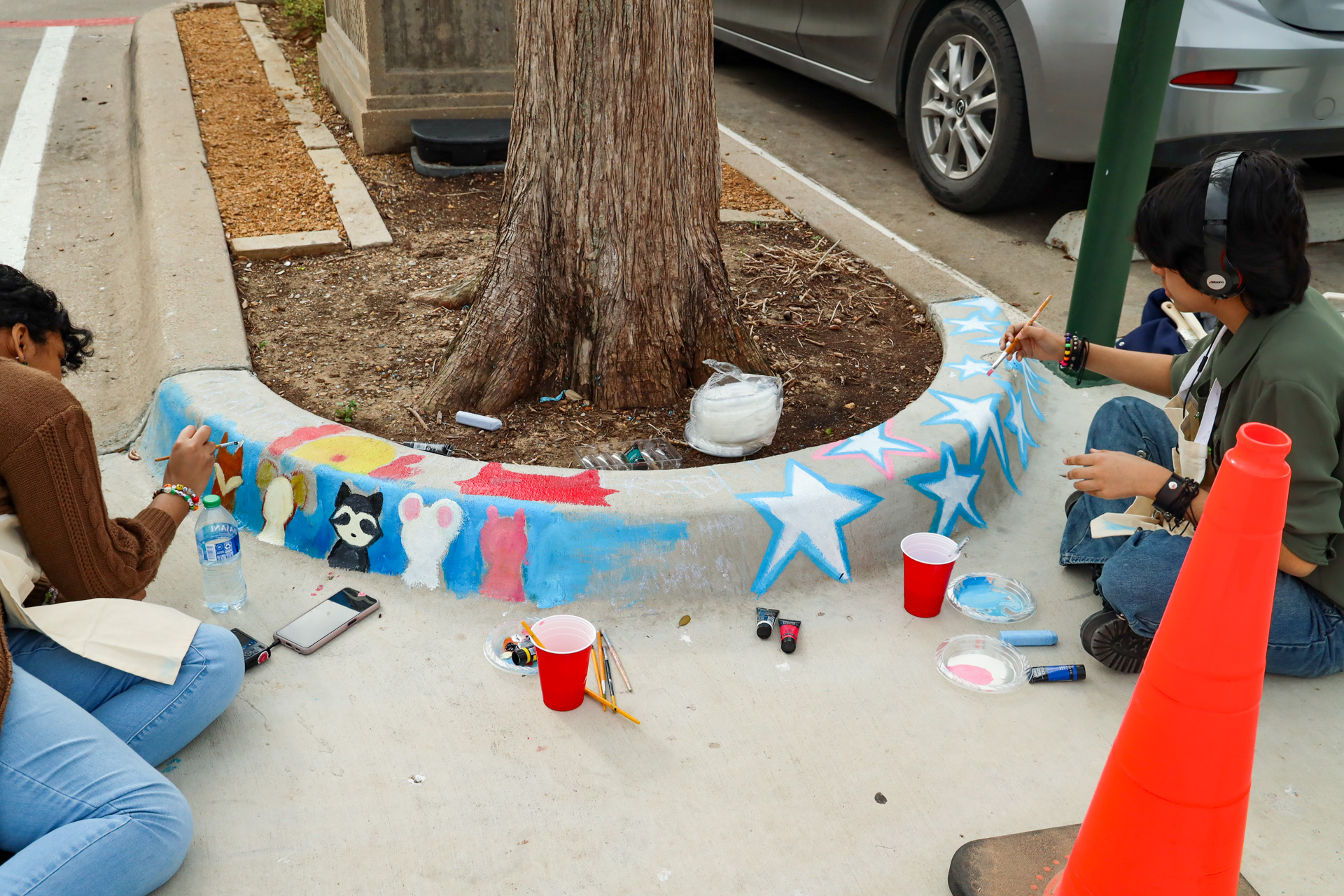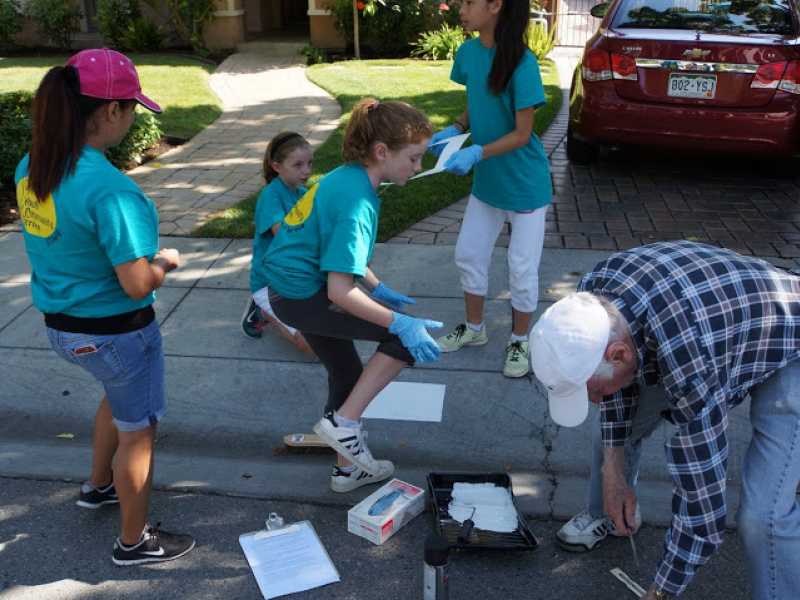Let’s talk about something super important that’s also pretty cool—curb painting as a way to care for the children. It’s not just about making streets look colorful; it’s about creating safer spaces for kids to grow up in. Imagine neighborhoods where every curb tells a story, every line has meaning, and every splash of color is there to protect little ones. That’s what we’re diving into today.
When you hear "curb painting," you might think of some random art project. But this is so much more. It’s an initiative aimed at increasing road safety, especially for children. The idea is simple: use vibrant colors and creative designs on curbs to make drivers slow down, pay attention, and keep kids safe in areas like school zones, playgrounds, and residential neighborhoods.
And honestly? It works. Studies show that curb painting can reduce speeding by up to 20%, which is huge when it comes to keeping kids safe. So buckle up, because we’re about to deep dive into why curb painting matters, how it’s done, and how YOU can get involved in caring for the children through this awesome initiative.
Read also:Before And After The Truth About Models And Cosmetic Surgery
Why Care for the Children Curb Painting Matters
In a world full of distractions—phones, music, you name it—drivers often miss the signs that kids are nearby. This is where curb painting steps in. By using bright colors and bold designs, these curbs grab the driver’s attention and remind them to slow down. Think of it like a giant "Hey, watch out!" painted right on the road.
Research from the National Highway Traffic Safety Administration (NHTSA) shows that pedestrian accidents involving children happen most often near schools and parks. Curb painting helps reduce these incidents by clearly marking areas where kids play or walk. Plus, it adds a touch of creativity to otherwise dull roads, making neighborhoods feel more welcoming.
But here’s the kicker: it’s not just about painting lines. It’s about building community awareness. When people see colorful curbs, they start talking about road safety. And when communities come together to care for the children, amazing things happen.
How Curb Painting Impacts Road Safety
Let’s break it down. When drivers see a painted curb, their brains instantly register "Caution." It’s like a stop sign without words. Studies conducted in cities like Portland and Seattle show that curb painting reduces average speeds by 10-15 mph in high-risk areas. That’s a game-changer when it comes to protecting kids.
- Painted curbs increase driver awareness.
- They reduce speeding in school zones and residential areas.
- They create safer crossing points for pedestrians.
Plus, curb painting is cost-effective compared to installing expensive traffic lights or speed bumps. All you need is paint, stencils, and a team of volunteers ready to make a difference. And trust me, the results speak for themselves.
The Science Behind Curb Painting
Now let’s get nerdy for a second. Why does curb painting work? It’s all about human psychology. Our brains are wired to notice bright colors and patterns. When drivers see a painted curb, they instinctively slow down because their brain is telling them, "Something’s different here. Pay attention!"
Read also:Rain Or Shine Riviera Club Your Ultimate Playground In The Heart Of The City
Researchers at the University of California found that curb painting reduces reaction times for drivers approaching intersections. This means they’re more likely to stop in time if a child suddenly runs into the street. And let’s face it, isn’t that what we all want—to keep our kids safe?
Plus, curb painting isn’t just about safety. It’s also about beautification. Studies show that colorful neighborhoods lead to happier residents. So you’re not just protecting kids; you’re making the whole community a better place to live.
Types of Curb Paints and Their Benefits
Not all curb paints are created equal. Some last longer, some are more reflective, and some are eco-friendly. Here’s a quick rundown:
- Durable Paints: These last up to two years and are great for high-traffic areas.
- Reflective Paints: Perfect for night visibility, these paints glow under headlights.
- Eco-Friendly Paints: Made from natural ingredients, these are safe for the environment.
Choosing the right paint depends on your budget, location, and goals. But no matter what you pick, the impact will be felt by the entire community.
How to Organize a Curb Painting Project
Ready to roll up your sleeves? Organizing a curb painting project isn’t as hard as you think. Here’s a step-by-step guide:
Step 1: Get Permission
Before you grab the brushes, check with local authorities. Most cities have guidelines for curb painting, and you’ll need permits to avoid fines. Don’t worry—it’s usually a quick process, especially if you explain the safety benefits.
Step 2: Gather Supplies
You’ll need:
- High-quality curb paint
- Stencils for designs
- Brushes or rollers
- Safety gear (gloves, masks, cones)
Pro tip: Look for sponsors to cover costs. Local businesses love supporting community projects!
Step 3: Recruit Volunteers
Spread the word on social media, flyers, or community boards. The more people involved, the faster the project goes. Plus, it’s a great way to build community spirit.
Success Stories from Around the World
Curious to see curb painting in action? Let’s look at some real-life examples:
Portland, Oregon: This city launched a curb painting program in 2018, reducing accidents by 15% in school zones. Parents and teachers loved it, and the program expanded citywide.
Seoul, South Korea: In 2020, Seoul introduced "child-friendly streets" with colorful curbs and pedestrian zones. The result? A 20% drop in child-related accidents.
San Francisco, California: Here, curb painting is part of a larger initiative to create "slow streets." Drivers report feeling calmer and more alert in these areas.
These success stories prove that curb painting isn’t just a trend—it’s a proven solution for road safety.
Lessons Learned from These Projects
One thing stands out: community involvement is key. Projects that involve local residents, schools, and businesses tend to be more successful. Plus, they foster a sense of ownership and pride in the neighborhood.
Another lesson? Keep designs simple yet meaningful. Overcomplicating the artwork can distract drivers instead of helping them. Stick to bold lines and bright colors for maximum impact.
Addressing Common Concerns
Of course, not everyone loves curb painting. Some critics argue it’s a distraction or a waste of resources. But here’s the thing: when done right, curb painting saves lives. Period.
Concern #1: Won’t it distract drivers?
Nope. In fact, studies show that drivers focus better in areas with painted curbs. The key is to use consistent designs that communicate safety, not confusion.
Concern #2: What about maintenance?
True, curb painting requires upkeep. But with durable paints and regular touch-ups, the benefits far outweigh the costs. Plus, many communities fund maintenance through grants or donations.
Responding to Skeptics
To skeptics, I say this: curb painting isn’t just about aesthetics. It’s about creating safer, happier neighborhoods. If you care about the children—and let’s face it, we all do—then this is a no-brainer.
How You Can Get Involved
Want to make a difference? Here’s how:
- Start a curb painting project in your neighborhood.
- Volunteer for existing initiatives.
- Spread awareness on social media.
- Donate to organizations promoting road safety.
Every little action counts. And who knows? You might just inspire others to join the movement.
Resources for Getting Started
Need help? Check out these awesome resources:
- National Highway Traffic Safety Administration
- Safe Routes Partnership
- Walkable and Livable Communities Institute
These organizations offer tips, funding opportunities, and support for curb painting projects. Take advantage of them!
Conclusion: Why Curb Painting Matters
So there you have it—a deep dive into why curb painting is such a powerful way to care for the children. From reducing accidents to beautifying neighborhoods, the benefits are undeniable. And the best part? Anyone can get involved.
Here’s the deal: if you care about road safety—and I know you do—then curb painting is worth considering. It’s affordable, effective, and community-driven. What’s not to love?
Now it’s your turn. Will you join the movement? Share this article, start a project, or leave a comment below. Together, we can make the world a safer place for kids—one painted curb at a time.
Table of Contents


